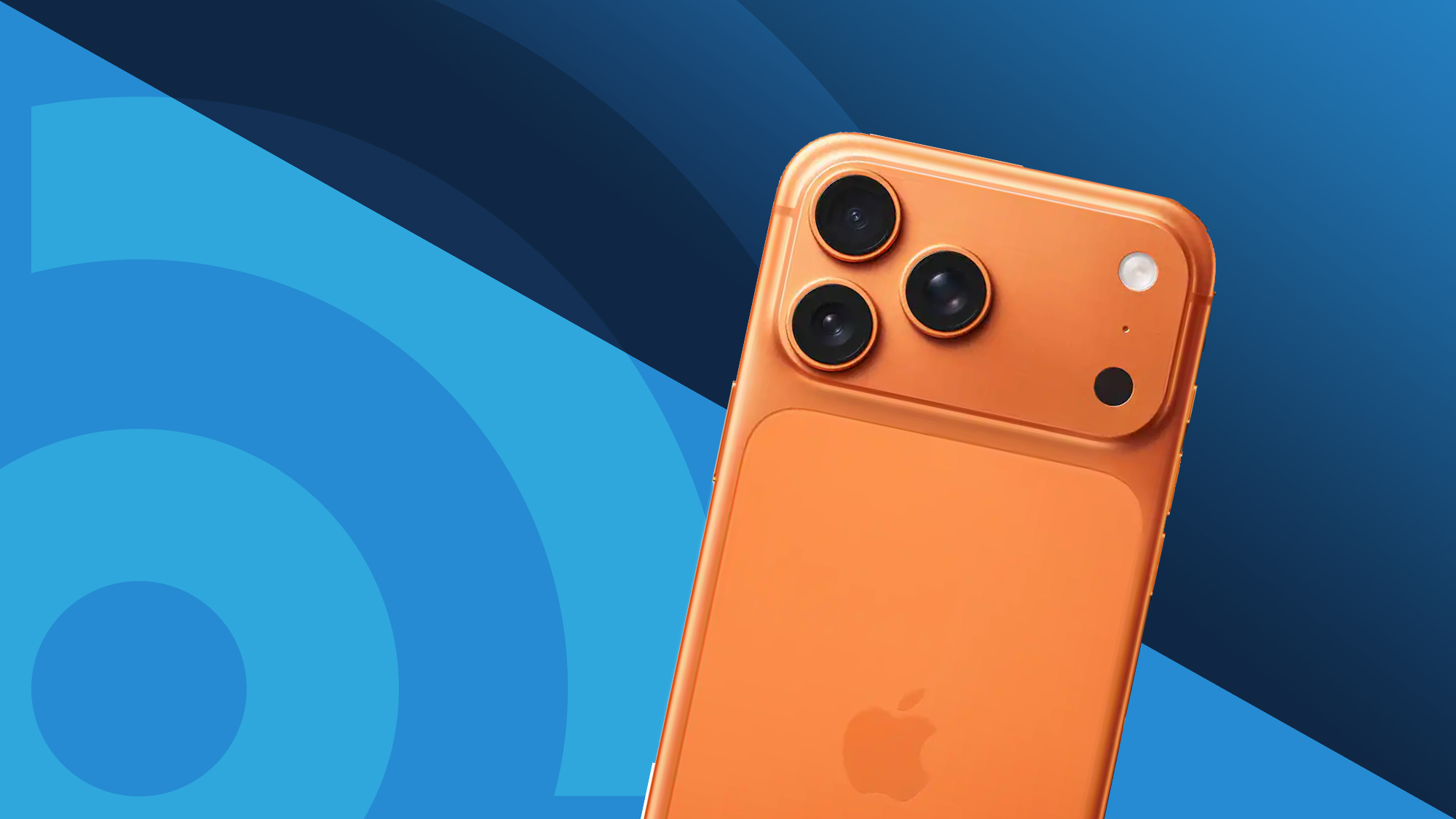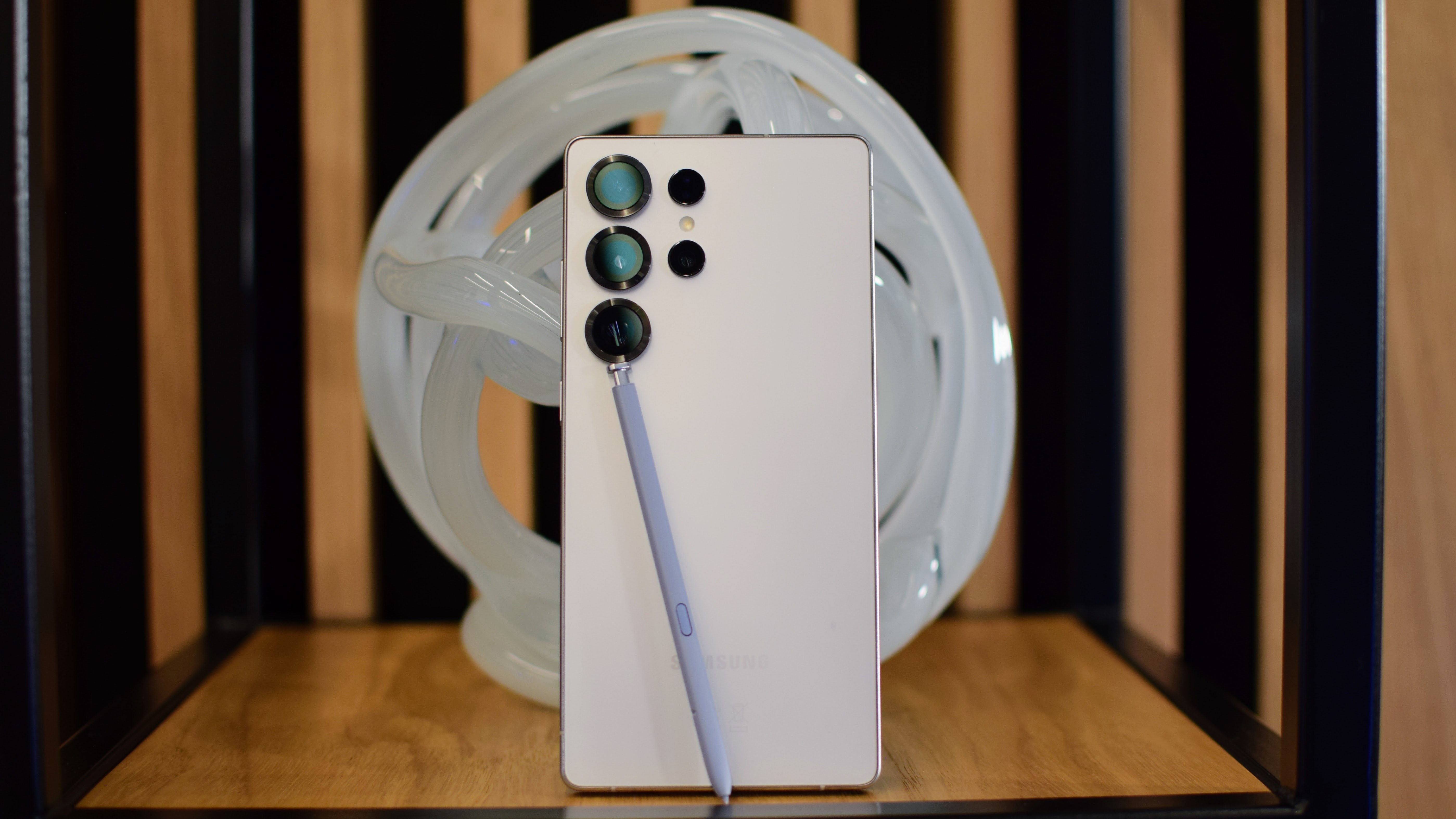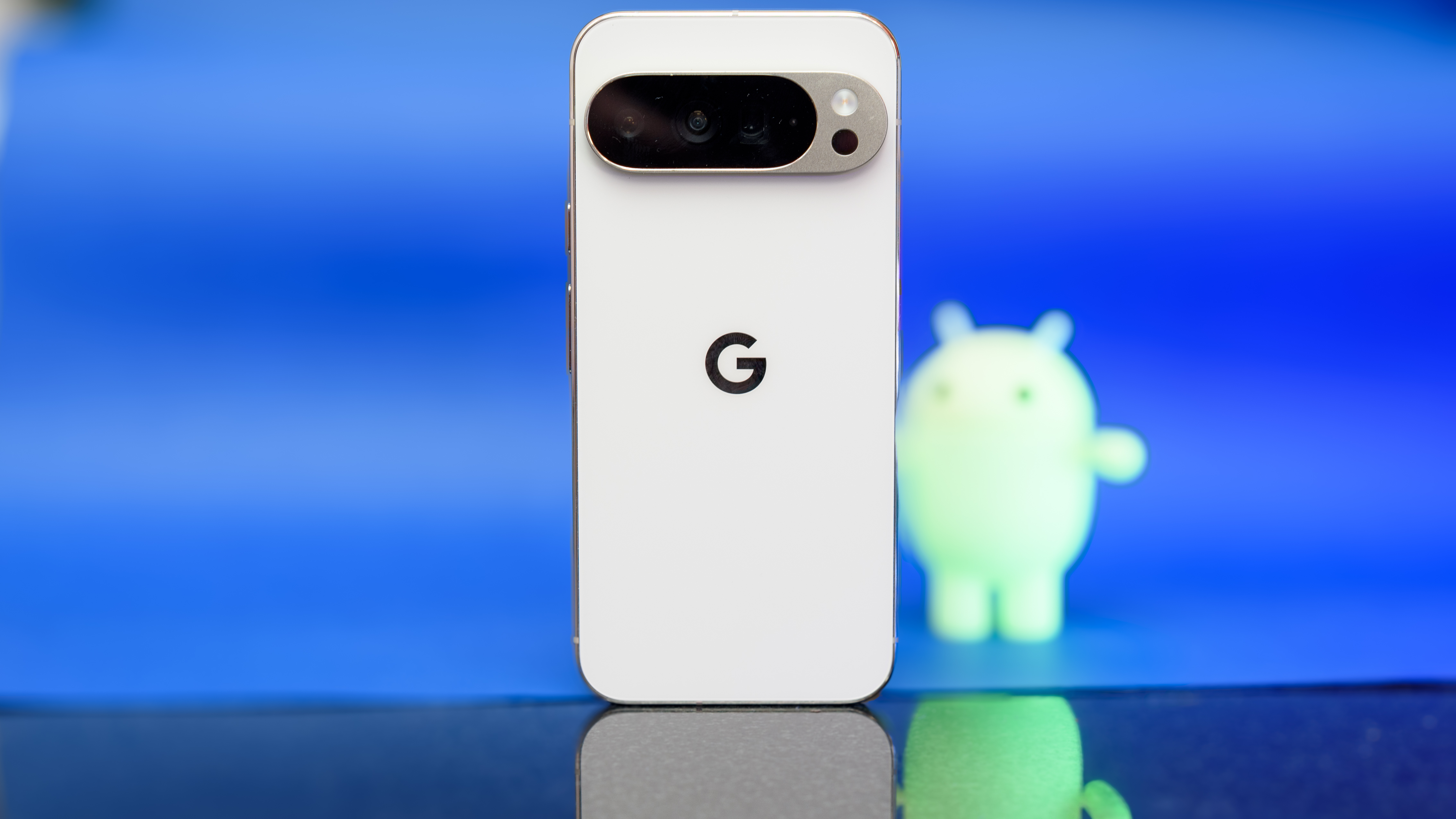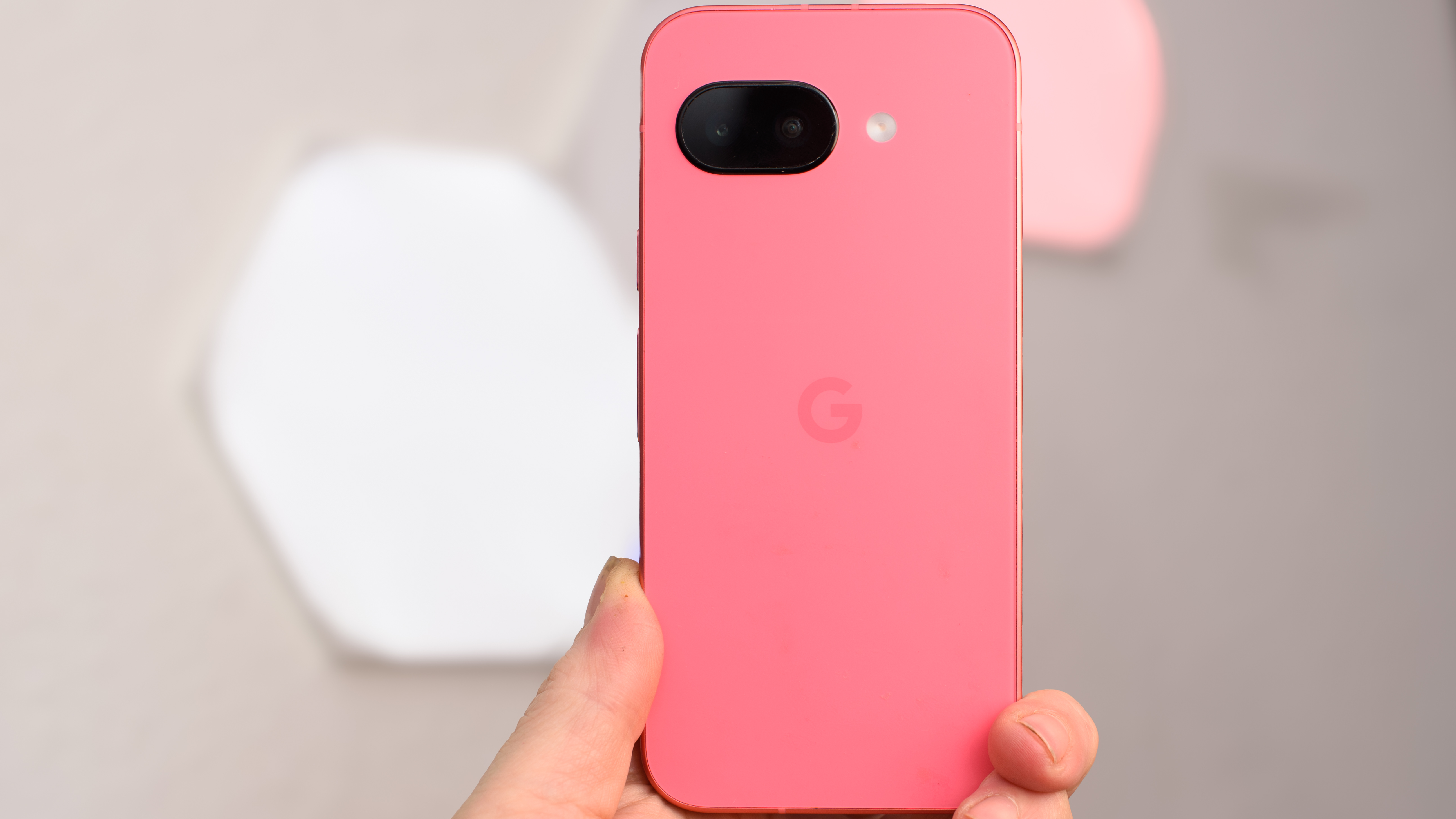The best camera phone 2025: all the top phones for photos and video, tested and ranked
Our photography experts have tested all of the best camera phones side-by-side

We've tested all of the best cameras phones announced in 2025, and there is a clear winner. While all of today's top smartphones can take amazing photos, the Apple iPhone 17 Pro Max is the best camera phone you can buy, no matter what type of photo you're shooting. That doesn't mean it's the only camera phone worth buying, but Apple has taken the top spot with its best iPhone camera ever.
In the past, the iPhone has been our favorite smartphone for old-school photographers: folks who want photos with a natural look that they might edit later. Other smartphones were better for photos straight out of the camera. The Galaxy S25 Ultra, for instance, takes amazing food photos with rich, appetizing colors and a distinct blur effect. This year's iPhone 17 Pro and Pro Max take photos that look just as tasty.
I've been a big fan of Google's Pixel cameras, and the Pixel 10 Pro and Pixel 10 Pro XL continue Google's trend of improving its photography with AI tools. The Camera Coach is a fascinating feature that might teach you how to be a better photographer. The Pixel requires much patience, however, as the slow Tensor processor inside caused delays when I was shooting and I ended up missing some shots.
I've tested phones at every price range, from the most expensive Samsung and Google foldable tablet phones, to the most affordable phones from Nothing and Motorola. I can recommend camera options that won't break your budget, like the Google Pixel 9a. I can also tell you which foldable actually has a great camera, if any (hint: Yes! and it's a Samsung).
I keep this list updated throughout the year, and I've always got the top three or four camera phones in my pocket, ready to take pics and compare shots. Keep checking back for new photo samples and updates.
The best camera phone 2025
Why you can trust TechRadar
The best camera phone

Specifications
Reasons to buy
Apple iPhone 17 Pro Max camera samples






The Apple iPhone 17 Pro Max is the best camera phone you can buy. It takes photos that are lifelike, rich in color, nicely balanced, and appealing to share. There are unique options to tweak the look of your photo or apply filters but you won't need them. Photos look great straight out of the camera, better than I've seen on any previous iPhone I've tested (ie. all of them).
If you shoot video, you need an iPhone 17 Pro or iPhone 17 Pro Max. Other camera phones can claim to match the resolution and might come close to the same frame rate, but no other smartphone shoots video from start to finish that is so reliably smooth, with no hiccups or dropped frames. Other camera phones can record video, but the iPhone is the true videographer's tool.
I might complain about the lack of shooting modes on the iPhone, but my photos didn't suffer for it. There is no Food mode like you'll find on a Samsung phone, and no Long Exposure mode like many camera phones offer. Those are usually AI tricks anyway. The iPhone 17 Pro Max doesn't need tricks. It just takes great photos.
Why the Pro Max? The iPhone 17 Pro has the exact same camera specs, so it will take equally amazing photos. If I'm choosing between the two, I always want a larger viewfinder to help me frame my shots and see fine details, so I like having the larger screen on the Pro Max. The bigger battery also helps.
Read our full Apple iPhone 17 Pro Max review
The best camera phone for influencers

2. Samsung Galaxy S25 Ultra
Our expert review:
Specifications
Reasons to buy
Reasons to avoid
Galaxy S25 Ultra camera samples







The Samsung Galaxy S25 Ultra is the camera phone I reach for when I want people to say 'wow!' when they look at my pics. If I'm taking a photo of the moon, or a delicious food truck meal, or a terrific sunset, the Galaxy S25 Ultra has the versatility to pull of any shot, and the style to make those photos pop.
I took the Galaxy S25 Ultra to an orchid show and my photos showed flowers in brighter hues than I have ever seen in person. On the one hand, it made the show look even more surreal, and my pics got a big reaction from friends; on the other hand, the photos didn't accurately portray the orchids I saw.
Sometimes that's exactly what you want. Samsung's Camera app has a food mode that makes everything you cook look delicious. The more accurate iPhone often renders food more lifeless, but the Galaxy lets you share your culinary adventures with drama and style.
That's why this is my favorite camera phone for influencers and folks who take photos to share. The Galaxy S25 Ultra adds drama and vibrance to your photos, without sacrificing quality. If you're a stickler for accuracy, go for the iPhone, but if you want to impress, the Galaxy S25 Ultra is the camera phone for you.
Read our full Samsung Galaxy S25 Ultra review
The best action camera phone

3. OnePlus 13
Our expert review:
Specifications
Reasons to buy
Reasons to avoid
OnePlus 13 camera samples







OnePlus has been trying to break into the top of this list for years, partnering with Hasselblad to coax a professional portrait look from its camera phones. With the OnePlus 13, it's finally achieved something truly remarkable, but not for the reason I expected.
Portrait, landscape shots, selfies - all look great when taken with the OnePlus 13 cameras. But the company has taken extra strides to capture fast motion, and the results are extraordinary.
You can use a normal burst mode with the OnePlus 13 and simply hold the shutter button, or you can tap as fast as your fingers can fly and the camera will snap multiple shots with a technique that OnePlus says captures a short and long exposure at once, then combines them.
The results are photos without any blur, no matter how fast the action is moving. You can see my surfer shots above, with visible water drops hanging in the air, even at night.
I also took plenty of photos of my kid playing football. Where the iPhone and Galaxy left him blurry or lost in graininess, the OnePlus 13 rendered him sharp, with a clear look at his jersey number. Just like I needed.
Read our full OnePlus 13 review
The best AI camera

4. Google Pixel 10 Pro XL
Our expert review:
Specifications
Reasons to buy
Google Pixel 10 Pro XL camera samples






The Google Pixel 10 Pro XL is the best AI camera, a mighty feat considering every smartphone today is using AI to improve its photography. If the idea of an AI camera is unappealing, it shouldn't be. The Pixel 10 Pro XL helps you become a better photographer, it doesn't use AI to create something fake.
The new Camera Coach is an AI helper than looks at the photo you're thinking of taking and offers real improvements. It doesn't take the photo for you, it teaches you how to improve your settings, your framing, and your camera position to get the shot you want. If you're not a photo pro, you might be after spending time with the Pixel 10 Pro XL.
The Pixel 10 Pro XL is also the best camera for AI photos like portraits. Most cameras fake the blurry background in portrait shots, but do a terrible job figuring out what should be sharp and what should be blurry. The Pixel creates portraits that look like real camera shots, with just the right amount of focus.
I was also very impressed with the digital zoom photos I took with the Pixel 10 Pro XL. All camera phones sharpen your photo past 4X or 5X zoom, and the Pixel does the best job creating a natural looking photograph that I might want to share. Other cameras zoom in and look blurry and smudged.
There's a big caveat, and that's the Pixel 10 Pro XL uses a slower Tensor G5 processor that causes some lag in the camera, especially if you use advanced settings like night mode or take high resolution photos. I missed a few shots because of the slow performance. The good news is the shots I took looked fantastic.
Read our full Google Pixel 10 Pro XL review
The best foldable camera phone

Specifications
Reasons to buy
Samsung Galaxy Z Fold 7 camera samples




The Samsung Galaxy Z Fold 7 defies the foldable phone norm with a main camera ripped straight from the Galaxy S25 Ultra - a wide angle, 200MP shooter to complement the ultrawide and zoom lenses on this powerhouse phone. Any sensor can offer a ton of megapixels, but the Samsung ISOCELL HP2 sensor on the Galaxy Z Fold 7 is one of the best you can buy, and the Fold is the perfect phone to showcase it's prowess.
With such a big main camera, the Galaxy Z Fold 7 isn't just a great camera phone, it's instantly the best tablet you can buy for photography. I've always dreamed of taking amazing photos with a viewfinder the size of an iPad, and the Galaxy Z Fold 7 offers an inner display that is just as big as an iPad mini, making it the tablet camera, er, phone of my dreams. It's incredibly easy to see every detail of your subject when you shoot with the Fold 7 open.
That big inner screen is also perfect for photo editing, whether you're using powerful tools like Adobe Lightroom or Samsung's own surprisingly adept Gallery app. The Gallery is where you'll find Samsung's special photo AI tools, and these editing options have gotten very good. If you delete somebody standing in front of vertical blinds, for instance, Galaxy AI is smart enough to redraw the blinds perfectly, matching the lines so it looks natural.
In our tests, the Galaxy Z Fold 7 really did produce images that rivaled the Galaxy S25 Ultra, at least on the main, wide camera. The zoom and ultrawide cameras took great photos, but they weren't quite as good or as detailed as the Ultra's shots, and the Fold 7 maxes out at 3X zoom, unlike the 5X zoom you'll find elsewhere. Still, this is by far the best foldable for photos, and it's images exceed my expectations of what a foldable phone can deliver.
Read our full Galaxy Z Fold 7 review
The best budget camera phone

6. Google Pixel 9a
Our expert review:
Specifications
Reasons to buy
Reasons to avoid
Google Pixel 9a camera samples





The Google Pixel 9a is a solid value, and even though the camera specs seemed to have dipped compared to the last generation Pixel 8a, the photos I got when I tested the Pixel 9a were fantastic. Google has a great habit of tuning its bargain phone cameras to look nearly identical to the Pro models, with the same accurate color and balanced lighting.
I was especially impressed by the new macro capabilities, which rely on AI to improve the photo. I took shots side-by-side against my Nikon D750 camera with a real macro lens, and the Pixel 9a not only delivered comparable results, it even managed to do a better job when there wasn't much light available, while my Nikon needed a flash.
My only real complaint about the Pixel 9a is that its kinda ugly, but that's in comparison to the Pixel 9, which I found to be one of the prettiest phones of 2024, so it was a let down that the Pixel 9a didn't look identical.
Still, this phone has great cameras, solid performance at this price, and a great display to help you take your shots. Google loves to offer discounts on the Pixel A-series phones, so if you can find it even cheaper, it's a no-brainer decision. But even at full price, it's a great budget camera phone.
Read our full Google Pixel 9a review
How we test camera phones
I've taken thousands of photos to determine which camera phones are the best overall, and which phone should be at the top of this list. Every time I get a new camera phone, I test it in the real world directly against all of the previous best. I test them in the exact same conditions to determine which produces the photos I like the most.
I test cameras in bright outdoor light and dark indoor light, and every lighting condition in between. I test in mixed lighting environments, as well as under studio lighting conditions. I test the zoom capabilities, portrait photography, and macro shooting for close up images.
I test cameras by using multiple camera phones at the same time and comparing the images side-by-side. For each review, I compare the cameras to other phones in the same price range, as well as to other phones from which interested buyers may be switching.
I test video recording under the same conditions. I also test the special shooting modes, including Hyperlapse and Slow-Mo, and any other included modes that may be of interest. If photo editing tools are a highlight, I also test the included photo editing tools.
FAQ
What phone has the best camera?
All of the phones on this list have great cameras that will take fantastic photos, but you can find a camera phone that is tuned to the shots you prefer. A Galaxy S25 Ultra or other Samsung phone takes photos that are rich in color, making them great for food photos and influencer selfies. The Pixel 10 Pro does a great job taking photos in difficult night-time light. Finding the best camera for your shooting style is the best way to be satisfied with your camera phone.
What iPhone has the best camera?
The Apple iPhone 17 Pro and iPhone 17 Pro Max each feature the same cameras - the best Apple has included with any iPhone model, ever. These are the best iPhone cameras you can buy.
Which Samsung phone has the best cameras
The Galaxy S25 Ultra packs the most cameras of any Samsung phone, with two real telephoto zoom lenses, in addition to wide and ultrawide cameras. That's the best Samsung camera phone, but you will also find the same 200MP sensor from the Galaxy S25 Ultra on the Galaxy S25 Edge and Galaxy Z Fold 7, so if you mostly care about wide photos, you can get the same great shots from those other Samsung phones.
Which Android phone has the best camera?
In the US, the best Android phone cameras are on Samsung's top phones like the Galaxy S25 Ultra. In other countries, phones like the Xiaomi 15 Ultra and Huawei Pura 60 Ultra have amazing camera capabilities, but those phones are not sold or supported in the US.
How do you take good pictures with your smartphone?
The first thing to do is stop tapping the screen. Use the volume keys - or the Camera Control on the latest iPhone models - to snap the photo. That will reduce the amount of movement on the camera. The second thing to do is edit your photos after you take them. Every top camera phone has amazing editing software that can reframe, remove unwanted distractions, and much more.
Is a real camera better?
Do digital cameras take better photos than smartphones?
Yes, a digital camera is better than a smartphone camera, but it depends on the camera and the type of photos you take. Digital cameras have larger sensors and larger lenses, which means more light to create the image. However, no digital camera maker is using AI and computational techniques to improve photos in the way that phone makers are doing, and digital cameras don't come with the same robust editing software and sharing capabilities on board.
How do phone cameras work?
How do phone cameras work?
Phone cameras have three main components: the lens, the sensor, and the image signal processor, which is part of the CPU. Most smartphones today have multiple lenses, and each lens is attached to its own sensor. There is no moving shutter on a smartphone camera, and no moving diaphragm to modify the aperture. Smartphones also rely heavily on a technique called pixel binning. This is when a phone uses four pixels in close proximity to create one final pixel image: thus a 48MP image becomes a higher-quality 12MP image.
Do megapixels matter?
Do MPs matter?
No. Megapixels don't matter at all. What matters is the size of the sensor. A sensor is like a pie. The Galaxy S25 Ultra has 200 megapixels, but it's sensor is the same size as the iPhone 17 Pro, which only has 48 megapixels. Samsung cut the pie into 200 million pieces, but those pieces, or pixels, are tiny, and you need to eat four at a time to get as much pie as one of Apple's pixels. A bigger pie, or sensor, is what you want, and it doesn't really matter into how many pieces it's cut.
How many megapixels do I really need?
How many MPs?
That's easy! You need 12 megapixels for most photos. A 12MP image is a great size for sharing over email and text, posting to social media, or even printing on an 8x10 sheet. If you are going to print larger images, or if you plan on cropping your images to include only a small portion, then more megapixels will help. Otherwise, more megapixels only mean a larger image file, and you probably don't need to waste the space if you aren't shooting photos to hang on your wall.
What's the best budget phone camera?
My favorite budget camera phone is the new Google Pixel 9a, especially if you find it on sale. It takes photos that are almost indistinguishable from the Pixel 9 Pro, and it really excels at macro photos and close-up shots. The Pixel 8a is still a great budget camera as well, so if you need to save even more, you might find that one at a great price.
What's the best selfie camera phone?
Best for selfies?
While we don't break out selfies on their own in this list, my favorite selfie camera phone right now is the OnePlus 13, which gives me a more artistic portrait look with its Hasselblad tuning on the cameras. You might find higher resolution selfie cameras, but don't bother. As I say above, 12MP is fine, and more than that is overkill for selfies. If you want a high-resolution self-portrait, you might also consider a foldable flip phone like the Motorola Razr, which lets you see yourself on the cover display while you take a selfie with the main camera.
What's the best camera phone brand?
What's the best camera phone brand?
Because cameras have become the most important part of a phone, I consider all of the best phone makers to be great camera phone brands. You can trust that Google's cameras, for instance, will be consistent across every model. You can trust that Samsung will have vibrant cameras and more shooting modes than any other phone maker. OnePlus has made a name with its Hasselblad partnerships and unique artistic tuning. Of course, Apple is always a standout camera brand, and even a cheap iPhone will have a high-quality camera.
What's the best camera phone for video?
What's the best camera phone for video?
The Apple iPhone 17 Pro and iPhone 17 Pro Max are the best video recording cameras right now, and it might not even be close. The iPhone 17 Pro is the only phone on this list that can record 4K resolution videos up to 120fps, which gives you truly cinematic looking slow-mo shots. Even at a normal resolution, the iPhone can record video that looks good enough for the big screen, and some filmmakers have famously used iPhones as the heart of their film process.
What should I look for when buying a camera phone?
Picking the perfect camera phone starts with knowing what you like to shoot. If you're snapping action shots of your kids' games or capturing wildlife in their natural habitat, a good zoom is a must-have. But if your Gallery is mostly filled with portraits and group pics with friends, a solid all-around camera will do the trick. If video is more important than photos, or if you plan on mostly sharing shots of sumptuous desserts, you'll want a camera phone that excels at those tasks.
What should I look for when buying a camera phone?
Picking the perfect camera phone starts with knowing what you like to shoot. If you're snapping action shots of your kids' games or capturing wildlife in their natural habitat, a good zoom is a must-have. But if your Gallery is mostly filled with portraits and group pics with friends, a solid all-around camera will do the trick. If video is more important than photos, or if you plan on mostly sharing shots of sumptuous desserts, you'll want a camera phone that excels at those tasks.
Which phone has the best camera?
The best camera phone for most types of photos is the Apple iPhone 17 Pro (and iPhone 17 Pro Max), because it produces photos that look like real photography, with no digital tricks or touch-ups apparent.
The Samsung Galaxy S25 Ultra is the best camera phone if you need some specialized photos, like delicious food shots or astrophotography, or landscape photos with bright blue skies and the greenest grass.
If you're a Leica fan, you might consider the OnePlus 13, which produces more artistic portraits and shots with a softer and more neutral look.
What about Xiaomi or Huawei phones?
The Xiaomi 14 Ultra is a phenomenal camera phone, and our UK reviewer Paul Hatton was enthused by the camera capabilities. We've left Xiaomi phones off this list for now due to their lack of availability in the US, but we are currently testing Xiaomi and Huawei phones in our New York Office and we may change our mind if these prove too good to ignore.
Whether or not Xiaomi or Huawei make the best camera phone, I'd warn US buyers against importing a phone without a local warranty. Buyer beware, it may be hard to fix, and impossible to fix under its own warranty, but if you want to see what we're missing, it's been a lot of fun so far.
How to choose the best camera phone?
Should you choose a phone based on the camera? Absolutely. After the messaging features, the camera is probably the feature you'll use most on your smartphone. You don't need the most expensive and expansive camera options, so it's best to consider what sort of photos you care about the most.
I'd suggest you take a look at the camera samples in this article and read our reviews, we try to offer a selection of the best images the camera produced in our brief review period, and we don't rely on studio testing. We also compare the cameras to all of the other phones you might consider, so you can trust our judgment is up to date and considering the competition.
How do I transfer camera photos to my phone?
You can use the software from your camera maker to transfer photos from your phone. Also, almost all phones today will let you plug in a USB card reader, and then you can read your camera's memory card with your phone. This way you can add your real camera's photos to your phone's photo library, and even edit your photo's using your phone's superior (AI) editing tools.
Why is my phone camera not working?
Have you tried turning your phone off and on again? That's the first thing that might help. If that doesn't work and your camera app won't take photos, try wiping your phone with a Factory Data Reset and reinstalling your apps from scratch. If it still isn't working, you'll need to seek support from the phone's manufacturer.
Sign up for breaking news, reviews, opinion, top tech deals, and more.

Starting more than 20 years ago at eTown.com. Philip Berne has written for Engadget, The Verge, PC Mag, Digital Trends, Slashgear, TechRadar, AndroidCentral, and was Editor-in-Chief of the sadly-defunct infoSync. Phil holds an entirely useful M.A. in Cultural Theory from Carnegie Mellon University. He sang in numerous college a cappella groups.
Phil did a stint at Samsung Mobile, leading reviews for the PR team and writing crisis communications until he left in 2017. He worked at an Apple Store near Boston, MA, at the height of iPod popularity. Phil is certified in Google AI Essentials. His passion is the democratizing power of mobile technology. Before AI came along he was totally sure the next big thing would be something we wear on our faces.